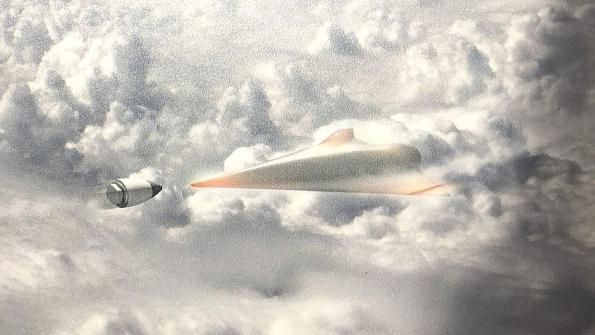
DARPA has selected Boeing to lead a flight demonstration of an advanced divert and attitude control system (DACS) and other technologies for a future interceptor against hypersonic glide vehicles.
A $70.6 million contract awarded on Sept. 8 launches a four-year Phase 2 for DARPA’s Glide Breaker program with Boeing in the lead role.
During Phase 1, DARPA awarded contracts to Northrop Grumman and Aerojet Rocketdyne in 2018 to develop separate DACS modules as an enabling technology for a future hypersonic interceptor. It was not immediately clear if one or both of those companies had been selected to proceed into Phase 2.
The Glide Breaker program is proceeding alongside the Missile Defense Agency’s (MDA) Glide Phase Interceptor (GPI) program. In 2021, MDA awarded design contracts to Northrop and RTX. Japanese industry will also participate in the GPI development program.
The GPI may be a future recipient of the Glide Breaker technologies, including the advanced DACS and other technologies being developed under the DARPA program.
Previous midcourse interceptors focused on shooting down long-range, ballistic missile threats also used DACS. But such interceptions during the midcourse phase generally occur outside the atmosphere, where the ring of small rocket thrusters in the DACS operates in a vacuum.
An interceptor targeting a hypersonic glide vehicle during the glide phase must attempt the shootdown with the target inside the atmosphere. In those conditions, the thrust pulses produced by the DACS must interact with the Mach 5-plus airflow produced by the interceptor during atmospheric flight.
The Sept. 8 contract award begins a four-year demonstration program. To support early development work in Phase 2, a presolicitation document published in April 2022 said that MDA had reserved time in March 2024 at the Von Karman Gas Dynamics Facility Tunnel B at the Arnold Engineering Development Complex in Tennessee.
The DACS technology for Glide Breaker is building on knowledge gained from the Advanced Interceptor Technology (AIT) program in the late 1990s. MDA has said that the AIT test results showed that interaction effects of a DACS onboard a Mach 5 vehicle are highly dependent on the nosecone angle, as well as the placement, geometry and thrust of the DASC motors.





